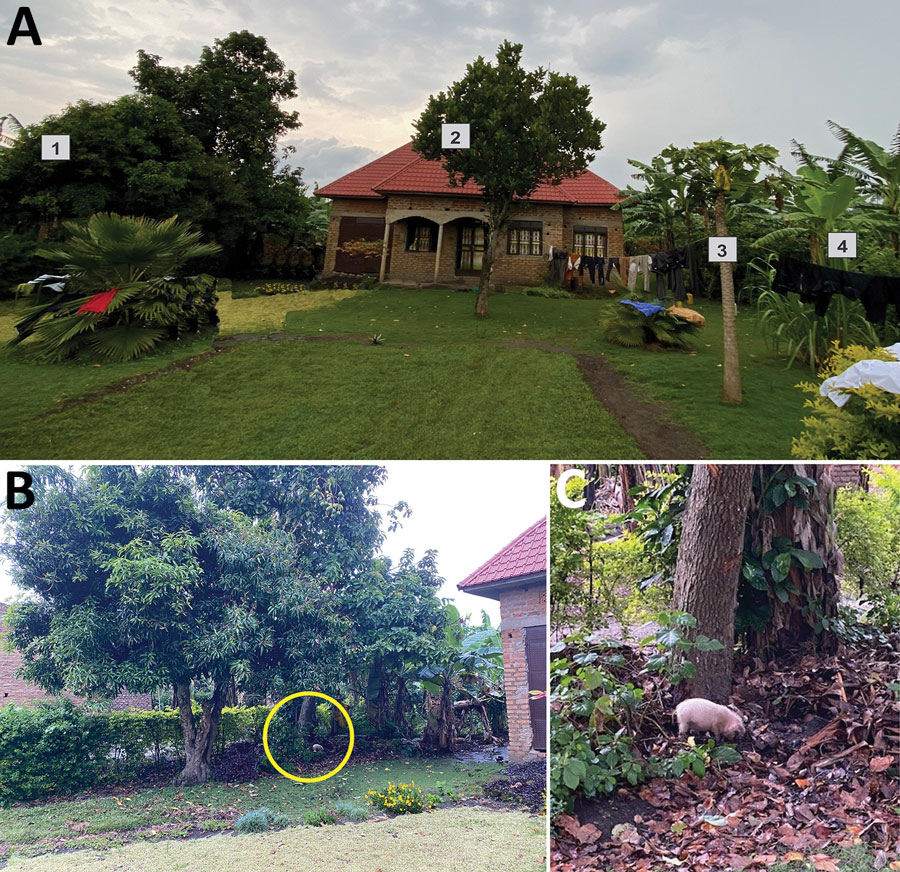Volume 29, Number 11—November 2023
Research
Micro‒Global Positioning Systems for Identifying Nightly Opportunities for Marburg Virus Spillover to Humans by Egyptian Rousette Bats
Figure 4

Figure 4. House visited by Egyptian rousette bat (Rousettus aegyptiacus) MV19, southwest Uganda, February 2022. A) Front view of the house where bat MV19 spent 10:35 pm‒4:10 am on February 12 and 13, 2022, foraging: 1, mango tree; 2, avocado tree; 3, papaya tree; 4, banana crop. B) Pig rooting underneath a mango tree (yellow circle). C) Enlargement of yellow circled area from panel B.
Page created: September 12, 2023
Page updated: October 23, 2023
Page reviewed: October 23, 2023
The conclusions, findings, and opinions expressed by authors contributing to this journal do not necessarily reflect the official position of the U.S. Department of Health and Human Services, the Public Health Service, the Centers for Disease Control and Prevention, or the authors' affiliated institutions. Use of trade names is for identification only and does not imply endorsement by any of the groups named above.